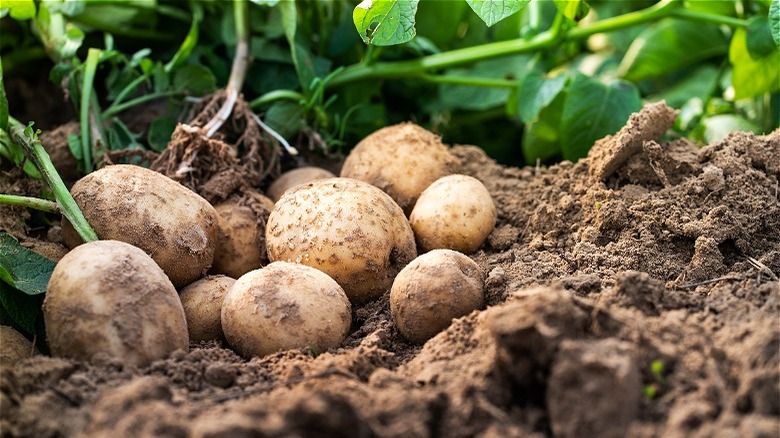Why French Fries Could Be Getting Shorter
Since 2020, the world has seen multiple disruptions in the most crucial sectors of everyday life, with food often standing out as the primary focal point for many businesses and farmers (per USDA). After all, humans need food to survive. If the COVID-19 pandemic taught us anything, it's to be prepared for whatever comes our way, yet the domino effects of the COVID-19 pandemic are still impacting farmers on a global scale in 2022 (via AG Week). With added food insecurity on the rise and food inflation sitting at extremely high numbers around the globe due in part to the war on Ukraine (via World Bank), food remains a touchy subject for most.
Fancy talk aside, how does all of this impact you as the consumer when it comes to your next grocery haul or weekend stop at McDonald's? You have probably found creative ways to cope with the U.S. Bureau of Labor Statistics reported 11.4% increase in food costs over the last year, yet there may be changes coming to your beloved french fries that are completely out of your control. As farmers around the globe continue to cope with supply and demand and reason with mother nature, a sudden crop disruption is beginning to ripple through many countries around the world.
Supply chain disruption and drought could mean smaller french fries
In addition to paying close attention to the uptick in food prices, you've probably noted the extreme weather conditions the world has faced over the last few years which has affected the availability of certain food items. Earlier this year, The Washington Post documented the growing crisis over the global potato shortage, showcasing how McDonald's in Japan and KFC in Kenya, Africa couldn't keep up with consumer demand for fries and "chips."
While Japan was the number one exporter of U.S. potatoes in 2020 (per USDA), America has undergone some serious issues since the onset of the COVID-19 pandemic regarding the uncertainty of restaurant supply and demand needs. Insider highlighted one of many American farms that were forced to bury endless pounds of potatoes during the height of the pandemic since restaurant shut-downs stopped consumer demand. According to the USDA, as of June this year, potato production remains 2% lower than last year's output.
However, the United Kingdom is facing a different issue regarding potatoes. In August the Independent documented the growing concern over extreme drought in England. Not only are farmers running out of water for crops, but this season's yield is expected to look different according to Tim Rooke, chair of the National Farmer's Union's potato forum (via The Telegraph). For potatoes bought in the UK, consumers should expect to see shorter potatoes in grocery stores and smaller fries in restaurants.

